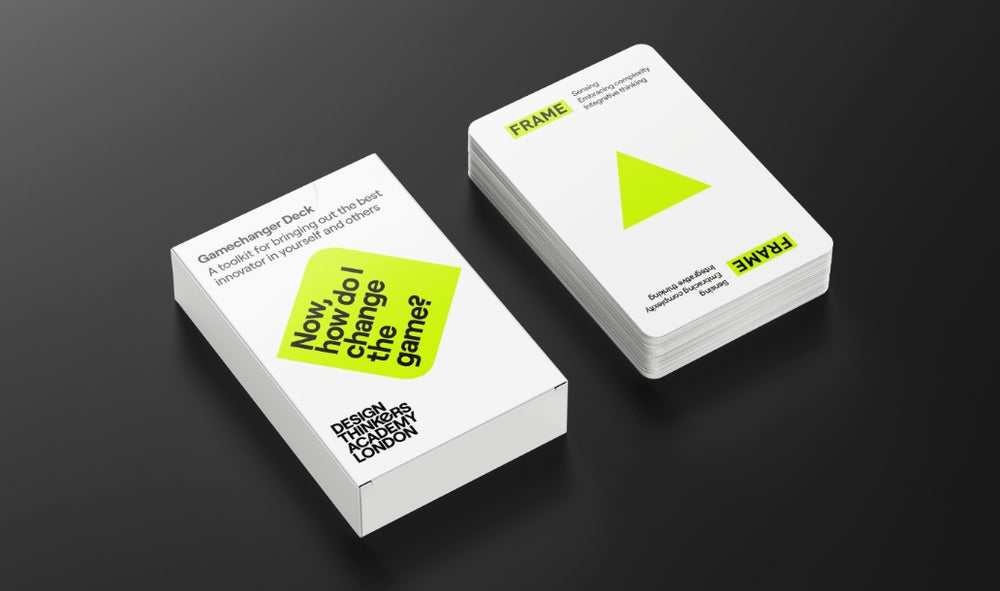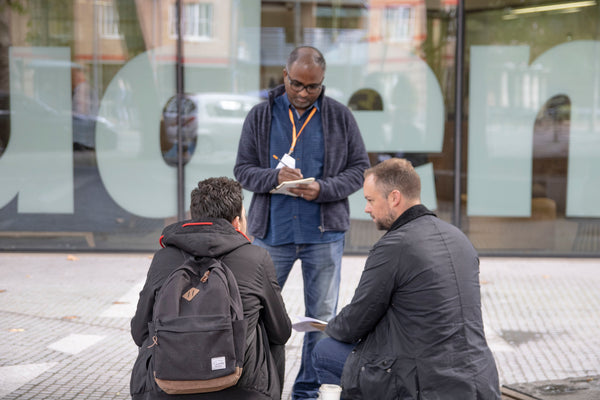It can be perilous to adopt an “if you build it, they will come” mentality. Too often, organizations jump straight into ideation and prototyping without understanding whom a product is for or what problem it is solving. The Accidental Design Thinker shares warning signs and pitfalls of this approach, as well as tips for avoiding this common design thinking misstep.
If you build “it”, will they come? Maybe, but very possibly not…
In my experience managing marketing and innovation teams within Fortune 500 companies and smaller organisations, I’ve found this question inevitably crosses the minds of most innovators, marketers, and entrepreneurs.
While the answer depends on a case-by-case basis, your odds of success are significantly higher if you know whom you are building for and the target need you are addressing. Design thinking can serve as a powerful mindset that ensures you’re consistently building solutions with a targeted end-user and compelling problem to solve in mind.
For design thinkers, securing deep empathy for customers/design targets and identifying a compelling problem to solve may seem like obvious first steps. However, all too often organisations borrow from Kevin Costner’s movie Field of Dreams and adopt an “if you build it, they will come” mentality.
What are the warning signs of this flawed approach?
The allure of a shiny prototype with all the bells and whistles can be powerful and blinding to even the most well-intentioned of leaders.
Do any of these symptoms of the “if you build it, they will come” mentality sound familiar?
Starting a project with:
- A whiteboard and a wall of colourful post-its. Looks & feels super productive.
- A prototype. Senior executives and a project team fall in love with the prototype and proceed straight to commercialisation, without understanding who the product is for, or what problem it solves.
- A strong-willed senior leader (e.g. founder-CEO like Steve Jobs) who drives development predominantly based on gut and instinct.
- An organisational bias that customer/user research is not valuable. Belief that customers either don’t know what they want or can’t articulate it.
- Alternatively, organisational appreciation for customer empathy but then a deliberate decision to ignore it (for any host of reasons).
Dealing mid-project with:
- Strategy built in hindsight. Completing product development, and then backing into a strategy.
- Pressure to develop and launch a product that’s not ready, due to an organisational need for immediate action (e.g. shareholder pressure, being first-to-market, hitting an annual revenue growth target / “gap-closers”).
- Constant in-fighting about how to go-to-market with a specific product because it was never established early on whom the product was designed for or what problem it’s supposed to solve.
“I see some of these warning signs. What’s the risk of jumping straight to ideation & prototyping”?
Skipping the Empathy & Define stages of design thinking results in ideations without a clear objective. This approach will yield triangle- and circle-shaped prototypes whilst your customer needs squares.
Without clear empathy for your design target or a well-defined problem to solve, it becomes difficult to evaluate ideas, concepts, and prototypes. There is no set evaluation criteria and feedback becomes a matter of individual preferences.
This approach is painful for all teams involved. Teams swirl in uncertainty with the lack of an up-front strategy. Perhaps you go far down a commercialisation path, develop a product, build marketing plans, initiate production, only to realise you’re chasing a dream not based on a real customer or a true user need.
“A little swirl for my team is expected & manageable, what’s the worst that can happen”?
Worst case scenarios for short-cutting the front-end of design thinking can range from expensive product failures to companies going out of business. Consider the following two cases of Juicero and the Sinclair C5:
1. Juicero
Juicero, maker of the beautiful $400 (USD) home-juicer that raised $120MM (USD) in funding, only to fail spectacularly in 2017.

Juicero started with a compelling yet general consumer problem that people do not consume enough fresh produce in their lives. The company developed a beautiful cold-press juicing machine with single-serve juice packets ($5-7 USD per packet) to address this problem. The proposed benefits were many, including convenience (speed/minimal clean-up) and great taste vs. other at-home juicing options.
However, Juicero made some critical missteps on the Empathy front. It developed a product without a clearly articulated end-user market (or more specifically, the founder built the product with himself in mind). Without a specific design target, it was likely difficult to gauge whether this juicer would adequately address consumer needs.
A greater upfront focus on Empathy would have likely surfaced critical shortcomings of the Juicero machine well before it launched. The machine’s hefty price tag, reliance on Wi-Fi to operate, and ability to only use proprietary juice packets (which were later discovered to be squeezable by hand, thus not requiring the machine), would have been flagged as unacceptable by customers, and Juicero could have avoided the perilous path that ended with its demise.
2. Sinclair C5

Sinclair C5, the single-passenger electric vehicle produced by Sinclair Vehicles in 1985; a founder’s product vision that lacked both a clear end-user and the right problems to solve
The Sinclair C5 was the brainchild of English entrepreneur Sir Clive Sinclair. Originally marketed as an alternative to cars and bicycles, the C5 was an eye-catching electric tricycle with a host of proposed benefits ranging from less pollution to not requiring users to have a driver’s license or wear a helmet.
However, the Sinclair C5 suffered from the same pitfalls as the Juicero machine; not enough upfront focus on consumer empathy or target problem identification. According to the director of the Primary Contact advertising agency (responsible for promoting C5 at the time), the C5 went all the way to the prototype stage “purely on the convictions of Sir Clive.”
While the C5 addressed some consumer problems, it introduced even bigger ones. Whereas the C5 may have been an eco-friendlier vehicle, there were significant concerns about its safety, durability, performance and handling. These are table stakes vehicle attributes that a greater upfront focus on Empathy and Define would have helped to surface as critical to product development.
Production of the C5 ultimately ceased just months after it had launched.
3 Takeaways for Avoiding This Disastrous Approach
1. Continuously and honestly assess where you are in the design thinking process
Before ideating & prototyping, make sure you can answer these basic questions:
- Do you know whom you are designing for? Can you describe who they are and what they think, feel and need?
- Is my idea addressing a compelling need or problem for my design target?
If you can’t answer these questions, you’re flying blind with a strategy built on hope and luck. Make the conscious investment to take a step back and answer these questions; it will save you lots of time and heartache in the future.
2. Remember the pitfalls of skimping on the Empathy and Define stages of design thinking
Don’t become a case study like Juicero or the Sinclair C5. If you need to influence others on the importance of nailing Empathy and Define, share these stories to bring to life the pitfalls of skipping these critical steps.
3. Keep the following mantras in mind to help you stay on the right track
- Seek first to understand
- There’s plenty of innovation in the world, but not enough empathy (and thus lots of solutions in search of a problem)
- Don’t look for a great idea, look for a great problem
- Iterate before it’s too late—don’t be afraid to take one step back, to avoid taking 10 steps sideways
A bias to action and an emphasis on design-doing are important, but not at the expense of shortcutting or omitting the front-end of the design thinking process. Resist the powerful urge to jump straight to ideation and prototyping. The future of your business may depend on it!











